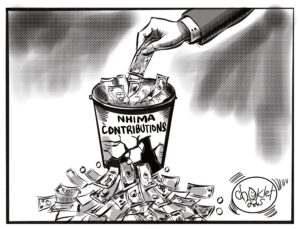Recently, The IMF approved the allocation of Special Drawing Rights to qualifying member countries with Zambia being one of the recipients. For Zambia, the initiative comes at a time when the country is working to rebound the economy which slid into a recession in 2020 at the backdrop of the COVID-19 pandemic. Expectedly, this has excited many commentators with some mistaking the SDR initiative for the famous ‘IMF bail-out package’. In this week’s opinion piece, I attempt to demystify the thrust of the SDR initiative and spotlight a few implications for Zambia.
1. BACKGROUND
The SDR is an international reserve asset, created by the IMF in 1969 to supplement its member countries’ official reserves. To date, a total of SDR 660.7 billion (equivalent to about US$943 billion) have been allocated. This includes the largest-ever allocation of about SDR 456 billion approved on August 2, 2021 (effective on August 23, 2021). This most recent allocation was to address the long-term global need for reserves, and help countries cope with the impact of the COVID-19 pandemic. The value of the SDR is based on a basket of five currencies—the U.S. dollar, the euro, the Chinese renminbi, the Japanese yen, and the British pound sterling. The SDR serves as the unit of account of the IMF and other international organizations. The SDR is neither a currency nor a claim on the IMF. Rather, it is a potential claim on the freely usable currencies of IMF members. SDRs can be exchanged for these currencies.
A general allocation of SDRs must be consistent with the objective of meeting the long-term global need to supplement existing reserve assets. It must also receive broad support from the IMF’s membership (an allocation requires Board of Governors approval by an 85 percent majority of the total voting power of the members in the SDR Department). Once agreed, the allocation is distributed to member countries in proportion to their quota shares at the Fund.
On August 2, 2021 the Board of Governors of the IMF approved a general allocation of SDRs equivalent to US$650 billion (about SDR 456 billion) to boost global liquidity. This largest SDR allocation in the history of the IMF (effective on August 23, 2021) addresses the long-term global need for reserves, helps build confidence, fosters the resilience and stability of the global economy, and supports liquidity-constrained countries in addressing the impact of the COVID-19 pandemic.
The SDR is not a loan so this initiative does not add to the stock of public debt of the country. However, there is a minimal interest payment that the country holding an SDR pays to the IMF. This is very minimal and negligible. The SDR interest rate provides the basis for calculating the interest rate charged to members on their non-concessional borrowing from the IMF and is paid to members for their remunerated creditor positions in the IMF. It is also the interest paid to members on their SDR holdings and charged on their SDR allocations.
2. IMPLICATIONS FOR ZAMBIA
For Zambia, this initiative brings approximately US$ 1.3 billion to the treasury and doubles the country’s current foreign exchange reserves. This comes at the backdrop of a deteriorated macroeconomic outlook registered in 2020 through to the first quarter of 2021. Economic growth contracted by an estimated 3 percent in 2020 before taking a recovery path in the first quarter of 2021. External public debt has increased in excess of US$12 billion, with the exchange rate now hovering around K20/US$, partly driving inflation in excess of 23 percent. It’s imperative to note that the SDR initiative comes with no conditions from the IMF in terms of usage, implying that receiving countries have the discretion to apply these resources to sectors of the economy as they deem fit. Therefore, for Zambia, one option will be to dedicate a larger part of the resources to the stabilization of the exchange rate. This will exert a dampening pass-through effect to domestic prices and reduce external public debt service costs thereby creating fiscal space for the stimulation of domestic economic activity. For the medium to long-term,it is particularly important to enhance support to productive sectors such as agriculture, manufacturing, energy and tourism in the quest to diversify the export base and create a more sustainable inflow of foreign exchange. It is also vital to note that this is only a once off disbursement. It is not the most anticipated ‘IMF bail-out package’ which Government has been negotiating for with the Fund. Therefore, for the medium to long-term, Government will need to focus more on concluding a formal program with the IMF as this is key to the successful implementation of the debt restructuring process.
About the author: Mr. Wakumelo Mataais a Researcher for Public Finance at the Centre for Trade Policy and Development.

























One Response
At least its kind of simplified